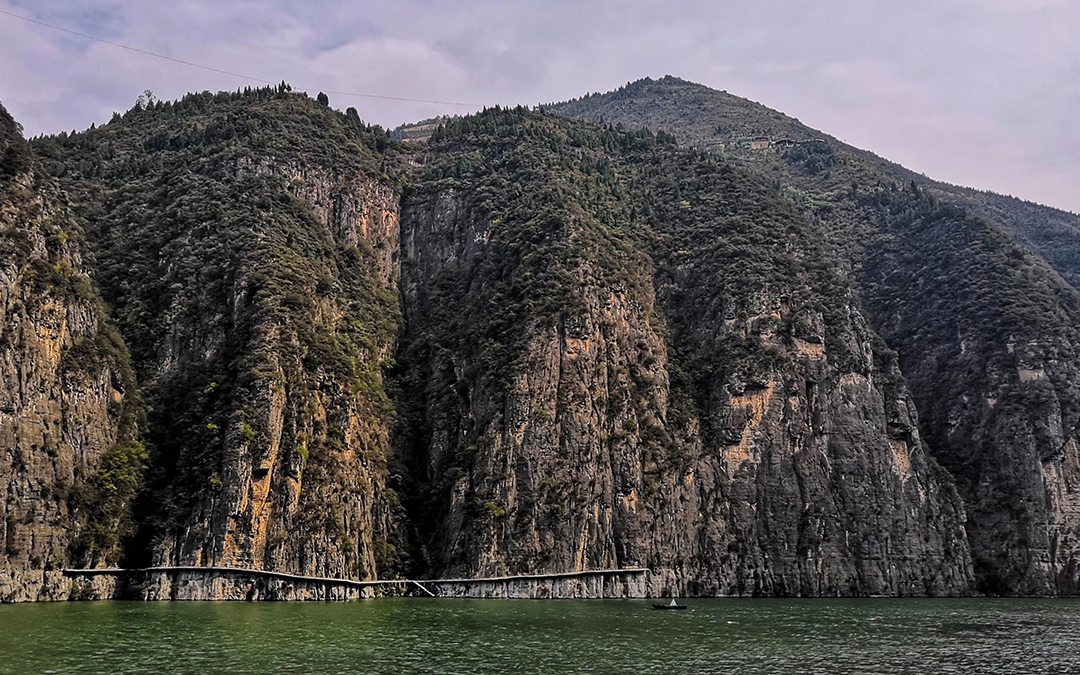Three Gorges 三峡
Originated in the far western part of China, Qinghai and Tibet Plateau, with a length of about 6300 kms, the mighty Yangtse or Changjiang 长江 is the third longest river in the world (after Nile and Amazon). This extensive waterway cuts through the heart of China. The river and flows through eight provinces before emptying its waters into the Yellow Sea near Shanghai. Over 700 tributaries draining a further six provinces join the Yangtse along its course.
The Yangtse has been described as the “wildest, wickedest river on earth”, a testament to its tendency to flood roughly once a decade causing death and destruction on a grand scale.
Generally Yangtse River can be divided into three parts:
The Upper reaches from the source in Qinghai Province to Yichang in Hubei Province, a distance of some 4400 kms. The Three Gorges are in this section.
The Middle reaches from Yichang to Hukou at the mouth of Poyang Lake in Jiangxi Province, a distance of about 1000kms.
The Lower reaches from Hukou to the Yangtse Delta, a distance of some 900 kms.
The Three Gorges of the Yangtse River lie between Chongqing and Yichang and are a popular destination for tourists the world over. With the building of the Shan Xia Daba (Three Gorges Dam) interest is higher than ever. In addition to the scenic grandeur of the gorges, the numerous rapids and odd-shaped peaks, the gorges are studded with countless historical sites and have been immortalized in reams of literature.
Qutang Gorge瞿塘峡
Immediately below White Emperor City, is Kui Men, the entrance to the first of the Three Gorges. Western travelers, also know the eight-kilometer Qutang Gorge as the Wind Box Gorge. The shortest but grandest of them all, the gorge’s widest point is only 150 meters. Mist frequently swirls around the limestone peaks, some nearly 1200 meters high, and the river rushes swiftly through the narrow entrance pounding the perpendicular cliff face on either side of the Gorge. Two mountains: Red Passage Mountain (Chijia Shan) to the North and the White Salt Mountain (Baiyan Shan) to the south, form the Kui Men entrance. In the Tang Dynasty (618-907 AD) chains were strung across the river as a gate to prevent passage of enemy boats.
Wu Gorge巫峡
Wu Gorge, “gorge of witches”, is generally considered to be the most enchanting of the Three Gorges. Below Wushan the river approaches the entrance to the 40 km long Wu Gorge which traverses Chongqing and Hubei Provinces. So sheer are the 2000m cliffs that it is said the sun rarely penetrates; sometimes the dappled light and misty showers give a surreal feeling.
Xiling Gorge西陵峡
Xiling Gorge starts at Xiang Xi Stream and zigzags for 76 kilometers down to the Nanjin Pass. It is the longest and historically the most dangerous of the Yangtse gorges. Before blasting made passage safe in the 1950’s the whole surface of the water was swirling mass of whirlpools sucking the froth they created into their centers! Landslides continued to destroy villages and in some seasons navigation remained treacherous before the first stage of flooding. Xiling is comprised of seven small gorges and two of the fiercest rapid stretches of the Yangtse between Chongqing and Yichang.







